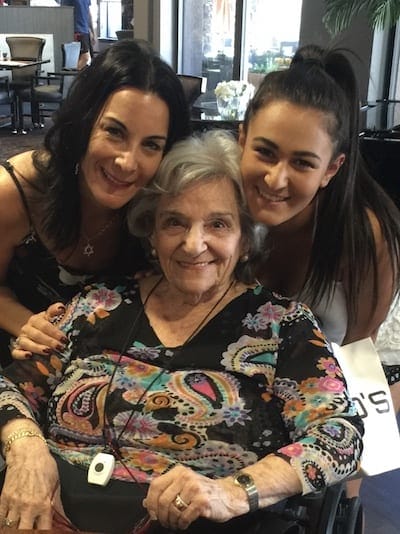By Jodi Amendola
My mother Thelma Kurzweil—a fiery, vibrant woman of 96 who had slowed down physically but was still mentally sharp—passed away from COVID-19 in the Arizona long-term care (LTC) facility she lived in on November 25, 2020.
Whenever Thelma’s children or grandchildren came to visit or would call, Mom would finish the conversation by saying, “This virus is very dangerous. Please be careful, darling.”
Little did we know she would pass away right before Thanksgiving from the virus she so feared.
While only one percent (1%) of the total population in America lives in a LTC facility, the residents of those facilities account for 36% (174,400+ as of early April) of the total deaths from this dreaded pandemic.
While many may dismiss these statistics as people who would have likely died from other causes if it hadn’t been for the pandemic, the reality is that many of these LTC facility residents might have survived—if some attitudes about COVID-19 were different.
Let’s start with vaccinations and whether they should be mandatory for healthcare workers, including those in LTC facilities.
It’s alarming that as of early April, only about half of LTC workers have been vaccinated for COVID, despite widespread access of the vaccine to them as frontline workers. If given the option, many of us would climb barefoot over hot, sharp Arizona rocks to be vaccinated. Yet many of the LTC facility employees who were among the first in line have said “no thanks.”
People give many reasons for declining the vaccine—from needle phobia to distrust to somehow believing COVID is not serious. I do understand where some of the distrust comes from in certain populations due to general disparities in healthcare with minorities. Yet the risk factor from COVID-19 is disproportionately higher in those communities as well, so having early access to a vaccine would seem like a good thing.
In memory of my mother and others like her, I urge healthcare leaders to work together to educate their staffs about the benefits of COVID-19 vaccination for themselves, their families, and the residents. It’s critically important to counter social media rumors with fact-based information. Some organizations are even offering incentives to employees such as providing those who are fully vaccinated with half a day’s vacation pay once they are fully vaccinated. Whatever it takes!
If education and incentives don’t work, vaccination should be mandatory. As we know, older adults are among the most vulnerable and even if they are vaccinated, no vaccine is 100% protective against COVID-19. And there’s still a lot we don’t know about the variants, too. The safety of the most vulnerable depends on herd immunity.
During lockdown, my mother never left her facility, so we thought she was relatively safe. But that turned out not to be true. When my mom passed away, the vaccine was not yet available—but now that it is, shouldn’t everything that’s available in the COVID-19 arsenal be employed to protect our most vulnerable?
My mom was always a fighter: She survived the Great Depression, a World War, a difficult pregnancy at age 45 (me), and all sorts of other challenges throughout her life. Until the final one threw us a curve ball.
I did not want my mother’s story to end this way. But I hope by telling it and urging those who can to help protect the most vulnerable, that others like my mother will be given the chance to live out the rest of their lives as they were meant to.
The Editorial Team at Healthcare Business Today is made up of skilled healthcare writers and experts, led by our managing editor, Daniel Casciato, who has over 25 years of experience in healthcare writing. Since 1998, we have produced compelling and informative content for numerous publications, establishing ourselves as a trusted resource for health and wellness information. We offer readers access to fresh health, medicine, science, and technology developments and the latest in patient news, emphasizing how these developments affect our lives.









